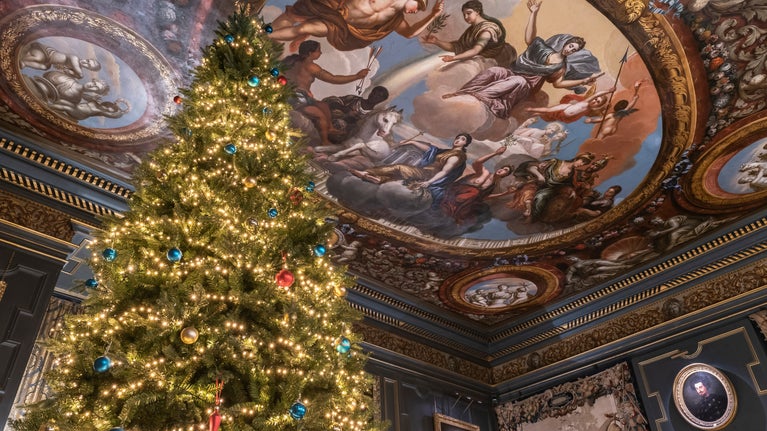
Immerse yourself in history
Meet people from the centuries gone by, learn about the unique artworks in our care and understand more about historic traditions.

The Armistice was the ceasefire that ended hostilities between the Allies and Germany on 11 November 1918. The Armistice did not end the First World War itself, but it was the agreement which stopped the fighting on the Western Front while the terms of the permanent peace were discussed. The Treaty of Versailles formally ended the war after more than half a year of negotiation.
Germany’s spring offensive in 1918 gained them territory but exhausted their supplies and reinforcements, and the Allies pushed them back with the immensely successful ‘100 Days’ campaign.
Four years of hardship at home and the news of military defeats led to social unrest and revolutions in Germany, and Kaiser Wilhelm II abdicated in November 1918. With a weakening military and no support on the home front, the Germans had to sign on the Allies’ terms.
The Armistice stipulated that the Germans evacuate occupied territory in France and Belgium. The Allies occupied the area ten kilometres east of the Rhine and declared the rest of the Rhineland region a demilitarised zone. They also insisted that the German military surrender war material such as planes, ships and machine guns. The Allies wanted to ensure that the Germans could not resume the war if the long-term peace negotiations broke down.
The British, French and Belgians each administrated different areas of the Rhineland while the Treaty of Versailles was negotiated. The Allies also maintained their naval blockade until the final peace settlement. This meant that it was difficult for Germany to import food, making the existing food shortage worse. The German people saw this as an injustice, which contributed to negative feelings towards the Allied nations in the inter-war period.
The National Trust’s commitment to looking after Britain’s natural landscape is tied to Britain’s commemoration of the end of the war. The Armistice was the first step in the peace process: the Treaty of Versailles was signed in June 1919, and 19 July was designated Peace Day.
In celebration of this, Lord Leconfield donated Scafell Pike, England’s highest mountain, to the National Trust, triggering a series of donations including 13 other peaks in the Lake District. This was the largest ever donation to the National Trust and was important to the foundation of the Lake District National Park. It also became Britain’s most spectacular and unique memorial to those lost in the First World War.
This article contains contributions from Peter Sawers from the University of Oxford who works on public commemoration and memory of the First World War. Peter is a contributor to the Trusted Source project.

Meet people from the centuries gone by, learn about the unique artworks in our care and understand more about historic traditions.

A hub for multi-disciplinary research projects and research engagement at the University of Oxford
We care for around 170 war memorials, with about 70 of those from the First World War. Discover the stories behind the monuments and find out where you can find them.

Learn about the places we look after that played an important role during the First and Second World War, from weapons testing sites to homes for evacuees.

Learn about the Reformation, the European-wide conflict over Christendom that gave rise to the distinction between Catholic and Protestant, and the links between the movement and the places in our care.
